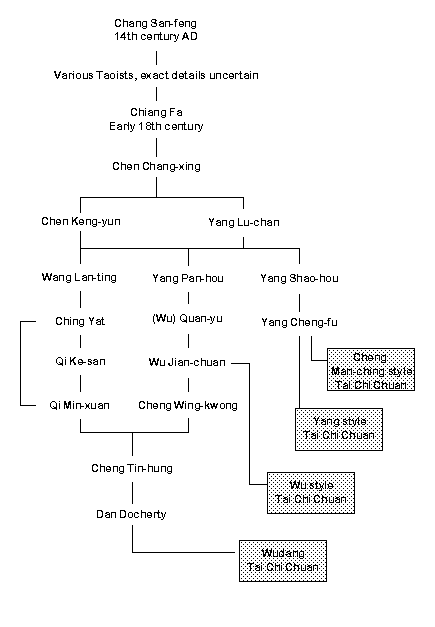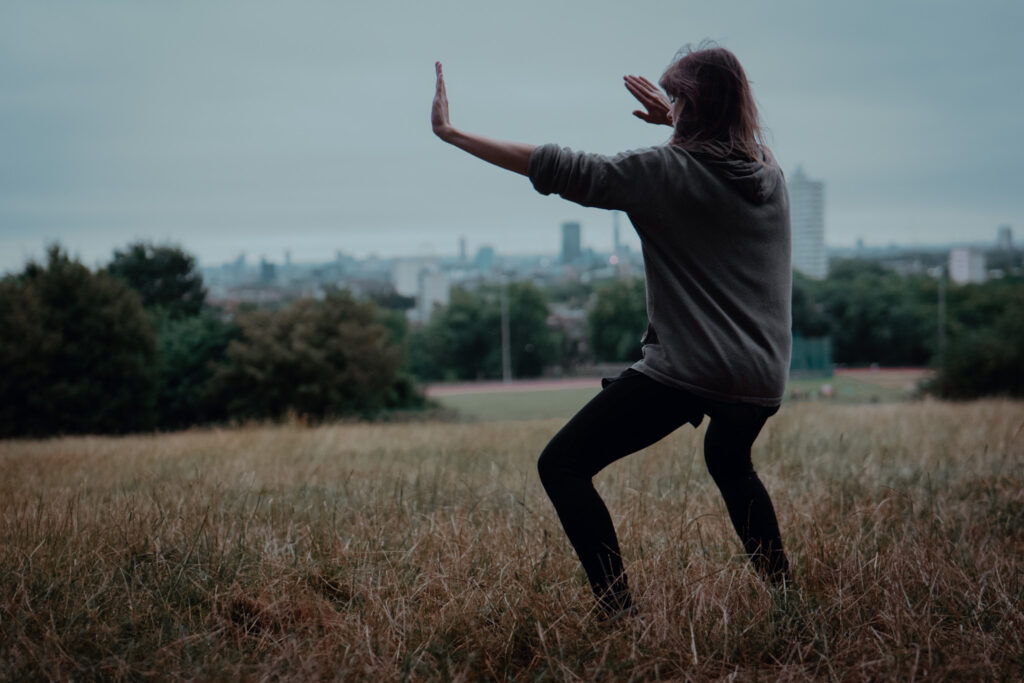A complete system of martial Tai Chi Chuan training.
We are based in Camden Town, London and offer our students a complete system of martial arts and health nourishing practices for a healthy mind and body.
History
Long ago in China, Tai Chi became famous as a martial training system due to the skills and abilities of a man name Yang Lu Chan. He was known as invincible Yang, because of his unbeatable martial arts skills, proven by beating all the major martial arts fighters in Beijing, which was the hot bed of martial arts in those times.
Since then the art has been passed down in many different forms and lineages, each making changes and developments over generations based on the understanding of each teacher. However in the vast majority of lineages most of, if not all of the emphasis, was on teaching the gentle aspects of the art for health promotion rather than the more practical combat skills.
In our lineage practitioners maintained a focus on both the health nourishing aspects of the traditional art, as well as the dynamic self defence and practical combat aspects. This is very unusual in Tai Chi, but it is the original design of the system and in our opinion offers the practitioner far more benefits and contextualises all the different training components.
Our lineage

For example Master Cheng Tin Hung, who learned initially from his uncle (who was a disciple of the famous master Wu Chien Chuan) then learned from another master Qi Min Xuan who was expert in the more combative aspects of tai chi. Cheng Tin Hung became famous in the tai chi world around Asia as the foremost teacher of fighting tai chi, training many full contact fighting champions and having his students show their practical skills in ‘duels’, which were common in Hong Kong at the time. His approach to a holistic practice of tai chi become known as ‘practical’ Tai Chi because he taught those who wanted to be able to defend themselves as well as improve their health and wellbeing.
You can see Cheng Tin Hung and his students practicing some of tai chi’s practical skills here;
One of his students, Dan Docherty a Hong Kong police inspector originally from Scotland, trained hard in all aspects of the art daily at Cheng Tin Hung’s rooftop gym in Hong Kong. After learning and gaining ability in the combat side of the art he rough in the major international full contact championships of the day, winning the super heavyweight championships despite being only a light heavyweight, proving the tai chi ideal of technique and skill overcoming size and power.

Dan returned to the Uk, basing himself in London and become a highly successful teacher, building a network of clubs across Europe.
Here’s a short clip of Dan showing his skills in one of his fights in Asia;
I learned my tai chi from Dan, from the late 1980’s from the age of 13. I’d already had a grounding in other martial arts and was keen to learn the combat aspects of tai chi. After a getting to grips with the basics of the art I began competing in the tai chi competitions of the day, which were mainly ‘pushing hands’, a kind of wrestling match. I won some British championships at the age of 18 and then competed successfully at the major international championships in Taiwan, the Chung Hwa cup. I started teaching around this time, with some students training just for health and others wanting to learn practical self defence and even compete.

At the first European tai chi championships in Holland I competed along with my student Sami Berik, winning all our 23 matches with no losses. From there many other students trained hard and won dozens of British and European tai chi championships.
In 1997 as a result of participating successfully in some early trial matches around the Uk I was selected to fight for the first heavyweight British title in mixed martial arts. I believe I was the first Tai Chi practitioner to do so. Sami Berik has gone on to become one of the most prolific mma fighters in the Uk.
Here’s some footage of that match;
Some students of mine have been keen on entering other styles of competition, primarily Chinese kickboxing now known as San Da. In this style of competition you can use throws and takedowns in addition to striking techniques. We have had multiple national champions and two world champions in these events.
Five components create Balanced training
Tai Chi offers many different types of training with an exceptionally wide array of potential benefits. There are five key components around which the art is structure.
Hand Form
Builds many of the key skills and abilities of the art both technically and physiological and psychologically. This is the aspect most often recognised as being tai chi. A series of postures practice with a relaxed attitude yet heightened awareness placed on feel and body posture.
Tui Shou
Partnered exercises that are used to build movement skills, sensitivity, reflexes and to condition our response to the opponents movements. The higher objective is to ‘understand force’ both offensive and defensive in ourselves and an opponent.
San Shou
There are 48 San Shou drills designed to develop skill in key self defence methods. Students learn to use the whole body to strike to the opponents most vulnerable points. They learn to grapple, throw and sweep effectively. Locks and restraining techniques are practiced. Defence, footwork and evasion is also trained to a high as possible level.
Nei Kung
Advanced training for committed students. This training is known as internal strength and builds a strong, powerful physique whilst developing technical skills. The mind is calmed and a high level of ‘stillness’ is achieved with the right amount of training.
Weaponry
Classical weapons training not only exercises the body in a wide variety of ways it also builds unique physical skills, footwork ability and power generation. The techniques can be adapted to be used in self defence with everyday objects.
The sixth additional component: Kung training
In addition to the core training methods, the sixth aspect is king training. This is ‘strength and conditioning’ exercises designed to further develop levels of physical capacity and toughness for the more committed students.
We have methods of training specifically designed to improve cardiovascular function and the stamina and endurance. Some are higher intensity suitable for certain people others are lower intensity which can be used by those who need to gently build up.
There are a wide range of exercises designed to build whole body integrated strength, explosive power and athleticism.
There is mindful movement and awareness training which helps to develop concentration, relaxes the body and mind and builds excellent postural control and coordination.
Certain exercises are designed to stimulate and improve the functioning of the internal organs, making us healthier all around and develops feelings of real wellbeing.
Partner drills and exercises further enhance coordination, timing, sensitivity, awareness, distance control and so on. They are also essential for learning and becoming skilful in the application of martial techniques for self defence (or competition).
Stillness in motion is an important concept in our tai chi training, and refers to your ability to maintain emotional and psychological calm in the face of stress or adversity (in life as well as in combat). To assist in achieving this desirable trait tai chi training includes breath awareness meditation techniques as well as mindfulness, mantra and visualisation meditations at a more advanced level.
In summary we want our martial tai chi practice to be something extremely enjoyable, appropriately challenging and extremely practical. Development of physical, emotional and psychological health and well being is the most important whilst at the same time developing truly practical combat skills for confidence in dealing with any difficult situations that can occur.
Neil Rosiak, chief instructor




